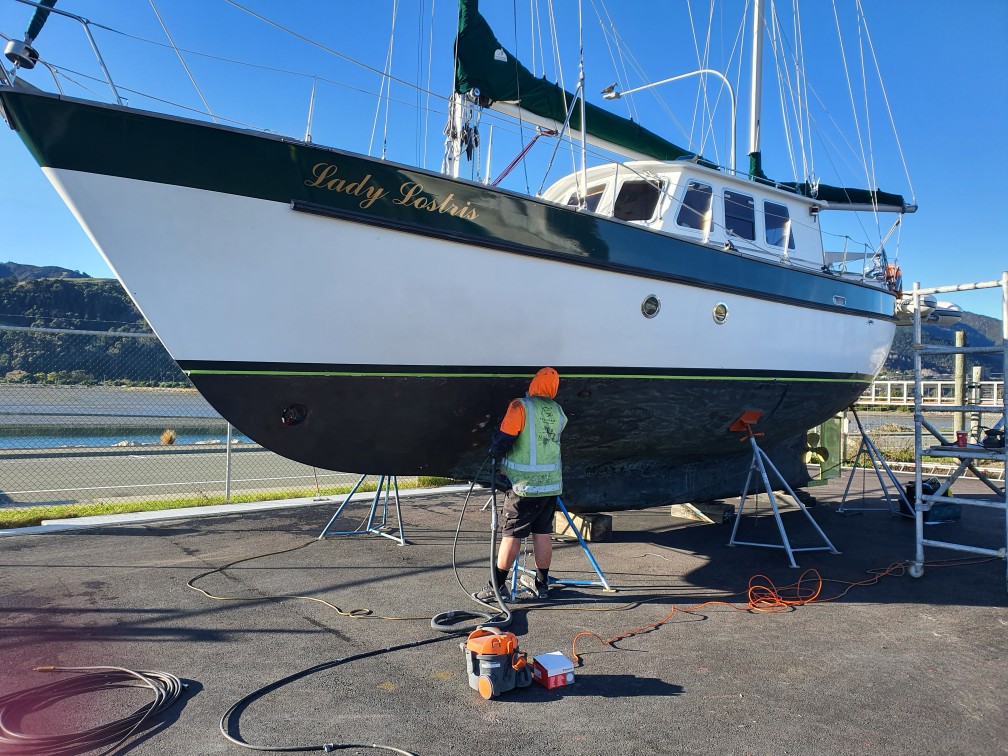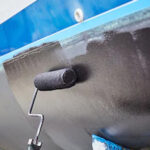Preparation is the secret while painting on any surface. Applying boat bottom paint in Marsden Cove is not the cleanest jobs, but it is truly easy to do. Here you will get the precise steps to insure a good bottom paint job; no matter you has a new boat, or a boat that has current paint on it.
Preparation on Bare Fiberglass for boat bottom paint in Marsden Cove
Clean
While painting a bare fiberglass or a gel coat hull for the first time, it is extremely vital that all pollutants like salt, wax, oil, grease or other foreign material are completely removed before sanding or application of a system. Scrub this surface with a detergent soap and stiff bristle brush.
A clean and de-wax fiberglass hull with a solvent based dewax. Saturate cheese cloth rag and wipe comprehensively to remove any cleaner and pollutants. Make sure to remove any residue, before it dries and change rags often to insure pollutants are completely removed.
Do not allow cleaner to dry on the surface and remove by flushing with water. Rinse the whole surface with water and check for any bearing on the surface which will indicate that wax is still present. If required, repeat step 2 again until the surface is pollutant free.
Sand and clean your hull
Sand to a uniform frosty, pale looking surface with sandpaper! Rewash with a grease cleaner, wax and cleaner.
Apply the bottom paint
Apply at least two coats of paint. Allow 3 to 6 hours between the coats and a minimum overnight dry before launching. Some paint might need more than 2 coating.
Epoxy systems on the bottom of the fiberglass are the best way to protect your boat from blisters. It also provides extra adhesion of the paint to the hull.
Bottom paint preparation over current paint
Clean
Clean the current boat bottom paint with a detergent washing or a pressure washing. If you have extra accumulation of mold, you can remove that by scraping or by using muriatic acid. Try to get the entire mold residue off the current old paint so that you have good adhesion of the new bottom paint.
Scuff sand
Scuff sand to a pale looking surface with sandpaper, then rinse with water and permit it to dry. If your old bottom paint is truly chalky, consider giving it a more aggressive sanding to insure proper adhesion of the new paint.
Apply the bottom paint
Apply at least two coats of paint. Allow 3 to 6 hours between the coats and a minimum overnight dry before launching. Check out the particular technical data sheet for the paint being used. Some paints might need more than two coatings.
If they get too technical, take notes and either ask someone that knows such things, or call the customer support line for the brand you are looking at. The websites of the manufacturer can be beneficial after you have selected your paint also. They generally list vital information like how many coatings to use and which thinner they suggest.
Once you have processed all the information, you should have a good idea about what paint you want to use. You might want to do a Google search and get some reviews on that specific line, just to ensure you have all the facts. Just keep in mind, don’t be scared by some bad reviews, as long as there are a considerable amount of good ones.
Selecting the ideal bottom paint may appear overwhelming with all the different choices, but if you follow these easy steps, you can make a sound decision on the ideal paint for your boat.














